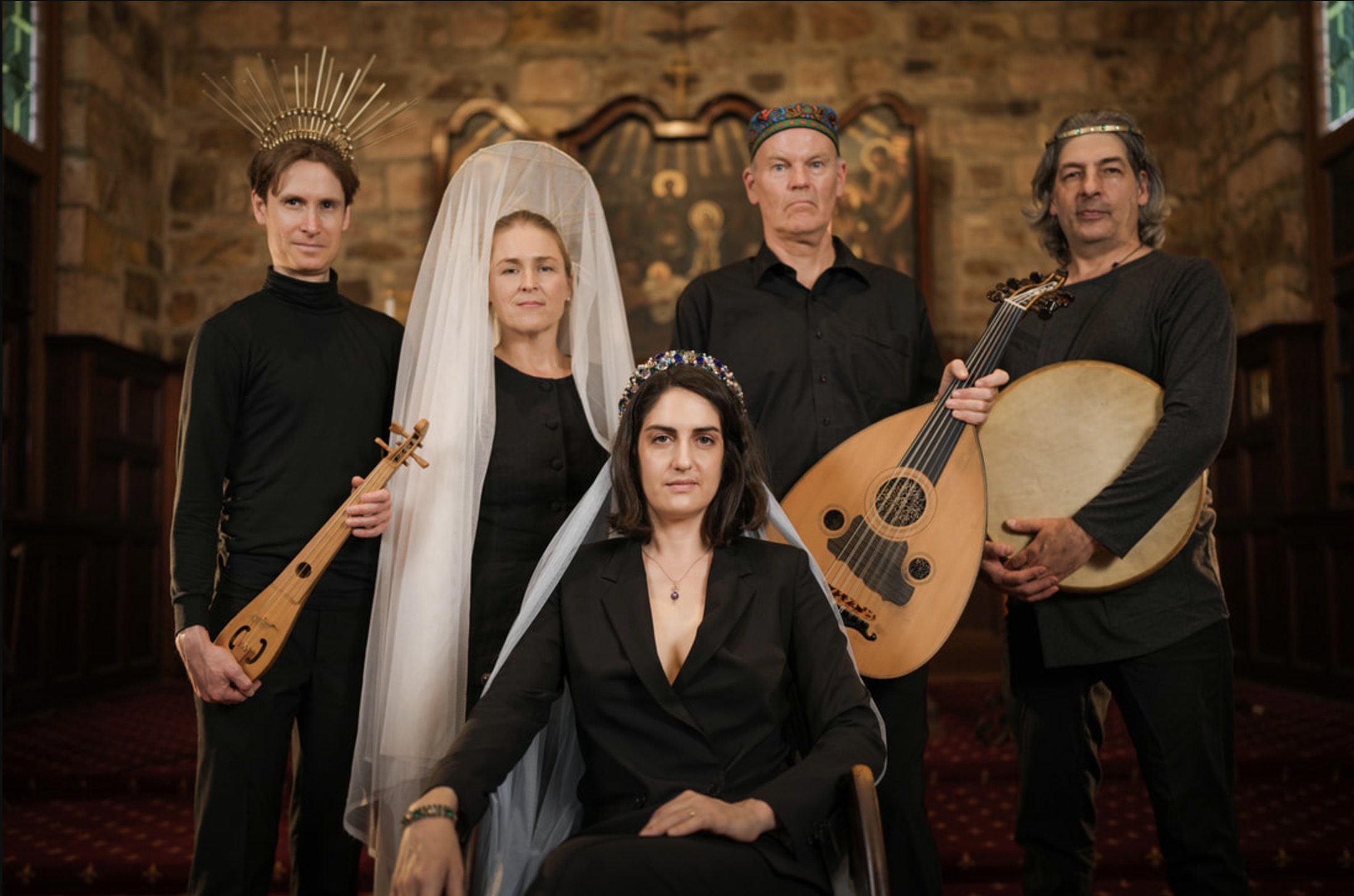This concert travels to medieval Spain and includes music from Christian, Jewish, and Muslim traditions. The Iberian Peninsula, famously multiracial and multi-religious in the Middle Ages, was the site of regular warfare between Muslim and Christian countries, with land passing in and out of the hands of kings and caliphs alike. Depending on the policies of the ruling sovereign, inhabitants of the conquered lands were either forcibly converted (as with the expansion of the Almohad Caliphate in the 12th century), or were allowed to continue practicing their own faiths (a system termed ‘convivencia’ by modern scholars).
Due to the long history of Christianity, Judaism, and Islam on the Iberian Peninsula, three different literary and musical traditions were developed there. Our program includes polyphony written for pilgrimage to the Shrine of the Virgin of Montserrat (located outside Barcelona), traditional Sephardic songs in Ladino, a Judeo-Spanish Romance language, and instrumental improvisation on Arabic melodic modes and systems of improvisation in traditional Arabic music. The program also includes two secular pieces from musical traditions located within or closely connected to those of the Iberian Peninsula; a troubadour song by the Comtessa de Dia and a cantiga d'amigo by Martim Codax.
Program
I
Lilium floruit………….Anonymous Aquitanian versus (12th c.)
Mariam Matrem virginem………Llibre Vermell de Montserrat (14th c.)
Mater, patris et filia……….Las Huelgas Codex (ca. 1300)
II
A chantar m’er………Comtessa de Dia (ca. 1175)
Kalenda Maia……………….Raimbaut de Vaqueiras (late 12th cc)
Ondas do mar de Vigo………….Martim Codax (13th c.)
La roza enflorece……………..traditional Sephardic song
III
La Seste Estampie Real………..anonymous (ca. 1300)
Alli en el midbar…………..traditional Sephardic song
Santa Maria, strela do dia……….Cantigas de Santa Maria (13th c.)
Performers
Anne Levitsky, soprano and hurdy gurdy
Madeline Gibbs, soprano
Christina Nichols, soprano
Aaron Brown, rebec
Philip Griffin, oud
Fractio Modi

Fractio Modi was formed in New York City in 2018, and moved to Brisbane in 2022 when Artistic Director Anne Levitsky took up a lectureship in Music at the University of Queensland. Our mission is to perform early vocal music at the highest level, and to make Brisbane the centre of early music in Australia. Current projects include a recording of Thomas Tomkin’s Seven Penitential Psalms and a collaboration with the Abbey Museum of Art and Archaeology to perform and record the music contained in their collection of medieval musical manuscript fragments.
Our name comes from the medieval development of rhythmic notation, which first appears in manuscript sources from ca. 1175-1200. This early rhythmic notation, called the rhythmic modes, consists of patterns of long and short notes that correspond to different poetic feet. Sometimes, the normal pattern of long and short notes was broken up into smaller note values: usually, the long note was broken up into shorter ones. This breaking up of the rhythmic pattern is called fractio modi. Because we often 'break up' expected patterns of performance - either by juxtaposing works from different time periods or geographical locations in the same program, or by experimenting with different methods of historically-informed performance practices - we have chosen it as our name.
About 2025 Nickson Room Concert Series
The University of Queensland School of Music is proud to present our Nickson Room Concert Series for 2025. In reflecting the School's role in the broader South-East Queensland community, we have designed a diverse and exciting program. With established international and national artists performing, as well as our own emerging student artists, this year is set to be a vibrant, creative, and energetic time at the UQ School of Music. We look forward to connecting with you.
